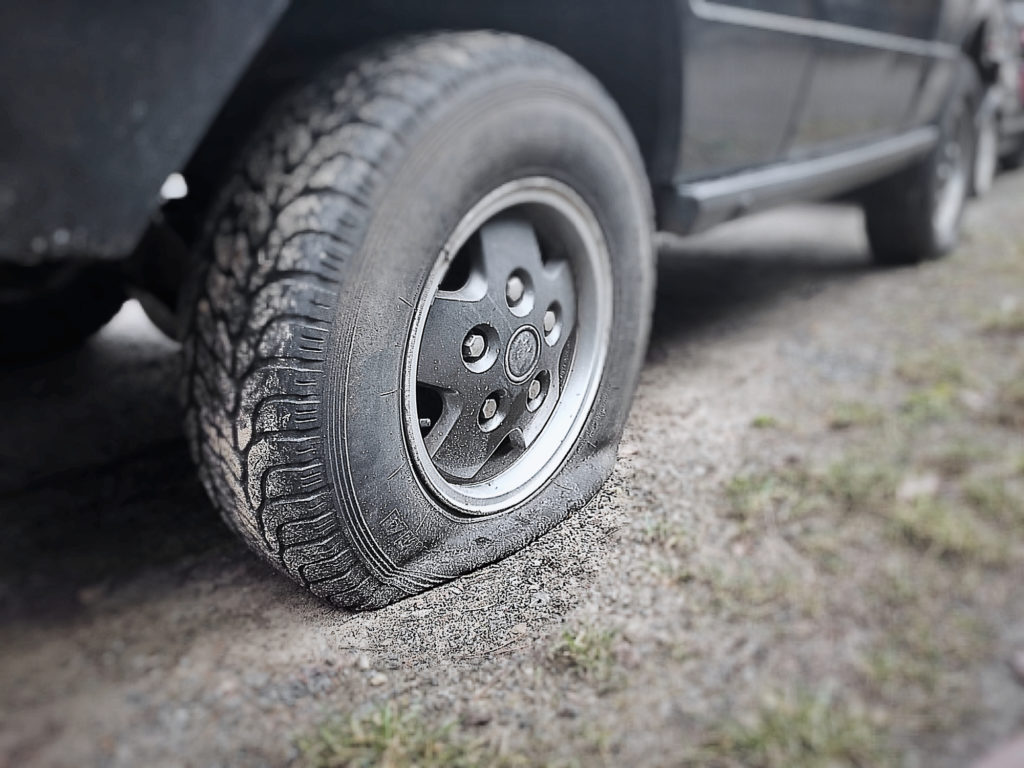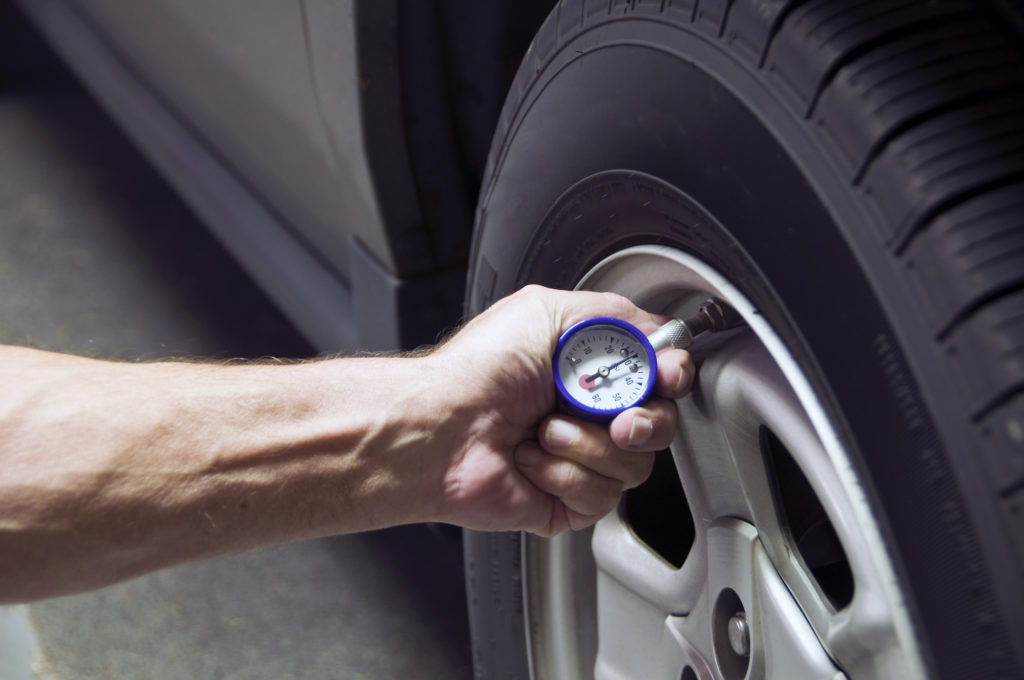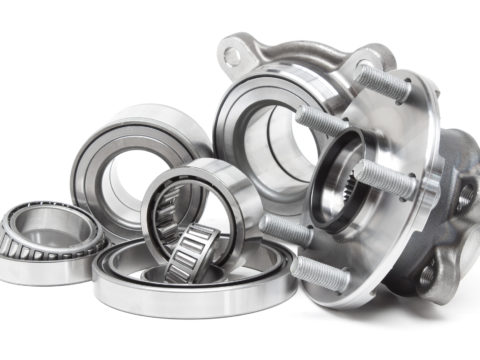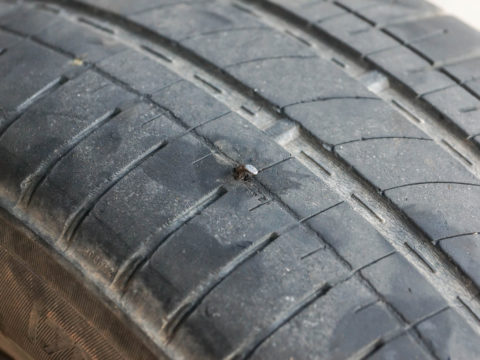As helpful as spare tires are, they’re not meant to serve as long-term solutions. Pushing one past its limits could have disastrous consequences for you or your vehicle, some of which might be far worse than another flat.
As such, it’s essential to know what to do—and what not to do—the next time you find yourself fishing out your spare tire.

If you’ve found yourself having to drive on a spare tire, you’re probably wondering how far it’ll hold out or how fast it’ll allow you to go. Since spare tires are only meant for short-term situations, you’ll need to ensure you’re not overusing them.
Contents
How Long Can You Drive on a Spare Tire?
Most spare tires are designed to carry drivers roughly 50-70 miles following a flat. In most cases, that should be more than enough distance to get you to a nearby automotive center or tire specialist for a repair or replacement.
How Fast Can You Drive on a Spare Tire?
Generally speaking, it’s best to avoid exceeding 50 miles per hour while you’re rolling with a spare. You’ll no doubt be anxious to get to a garage but resist the temptation to rush. Going too fast could have a subtle yet significant impact on the way your vehicle drives.
3 Types of Spare Tires
These days, spare tires come in three main varieties. Let’s take a look at them.
Donut/Space-Saver Tires
The basic donut (more appropriately known as “space-saver” tires) is the most common style of a spare tire for sedans, compact SUVs, and similar mid-sized automobiles. A typical donut is several inches smaller than a regular tire in terms of both width and diameter.
When driving on a donut, it’s wise to follow the “50-50” rule—that is, make it a point to travel no farther than 50 miles at speeds no greater than 50mph before having a new tire put on.
Full-Size Spare Tires
A full-size spare tire is simply an extra tire, just like the ones you already have on your vehicle. Although full-size spares are identical to regular tires, it’s still best not to go too far on them, as the thicker, grippier tread will cause them to wear differently. Over time, this slight difference can pull your vehicle out of alignment.
Run-Flat Tires
Though they’re not technically spares, run-flat tires essentially function as their own temporary replacements in the event of a puncture. That’s because they contain unique structural elements that help bolster the tire from within.
Even so, you shouldn’t drive farther or faster than the often-quoted 50 miles at 50mph or less unless you want to risk subjecting your vehicle to further damage.
What Should You Do if You Experience a Flat Tire?
There are a few ways to go about dealing with a flat tire. If you have a spare tire and a portable jack handy, the simplest solution is to change the tire yourself.
Changing a tire ordinarily only takes a few minutes and is much easier (not to mention cheaper) than calling for help. Roadside assistance services like AAA can also give you a hand with your spare if you’re unsure how to put it on.
Assuming neither of these options is available to you, you’ll have no choice but to have your vehicle towed to the closest garage. You’ll likely have to drop a hefty chunk of change between the tow and the subsequent repairs, but it’s better than being stranded on the side of the road indefinitely.
How Much Does a Spare Tire Cost?
There’s no such thing as an “average” price for a spare tire. Depending on the kind of tire you select and the specific vendor you get it from, you could end up shelling out anywhere from $50 to $350.
Full-size spares will, of course, cost more. You can expect to pay the same price for one of them as you did for each of your original four tires. The same is true for run-flats. These tend to cost around $40-60 more than their standard counterparts.
If you’re in the market for a new spare, you can pick one up just about anywhere that sells tires, including tire retailers, service stations, and the automotive departments of big-name superstores.

FAQs
Following are a few direct, no-nonsense answers for some of the most-asked questions about spare tires and how to drive on them.
What’s the difference between a donut and a full-size tire?
A donut, or space-saver spare tire, has a smaller overall diameter, narrower base, thinner tread, and less supportive rim than a regular tire. Meanwhile, a full-size spare is the same as the sort of tire it’s meant to replace—it’s just an extra tire that’s there in case of emergencies.
Is it safe to drive on the highway with a spare tire?
It is safe, provided you’re mindful of how fast you’re going. Rather than accelerating to unsafe speeds to keep up with the flow of traffic, switch on your emergency flashers and cruise carefully at a top speed of no more than 50mph until you reach your destination.
What happens if you drive on a spare tire too long or too fast?
Demanding too much from a spare tire could present problems, including difficulty cornering or braking, a second flat, and alignment and suspension issues.
In the worst-case scenario, it could even put unnecessary wear on your transmission, resulting in a costly overhaul.
When should I replace my spare tire?
You should replace it as soon as you’ve driven as many miles on it as it’s rated for. By promptly replacing your spare as soon as you’ve racked up the recommended mileage, you can make sure you’re prepared the next time you wind up with a flat (which hopefully won’t be for a while).
Do I need to drive differently on a spare tire?
Along with watching your speed and not driving any longer than you have to, you’ll also want to be extra cautious while turning, especially when you’re navigating particularly sharp curves. That said, as long as you stay below your spare’s recommended speed cap, you should be fine.
Does spare tire size matter?
Yes. While there is some wiggle room, your spare needs to be sized appropriately for the vehicle you’re driving. Otherwise, even responsible driving could throw off your alignment, harm your suspension, or have a host of other adverse side effects.
Is there a Universal spare tire?
In short, no. The trusty donut is about as close as it comes, but even these are made to several different specifications and must be fitted carefully, as mentioned above. The best way to figure out what size spare tire you need is to consult your vehicle’s owner’s manual.














